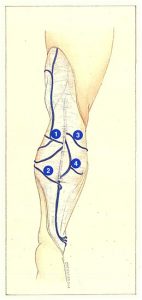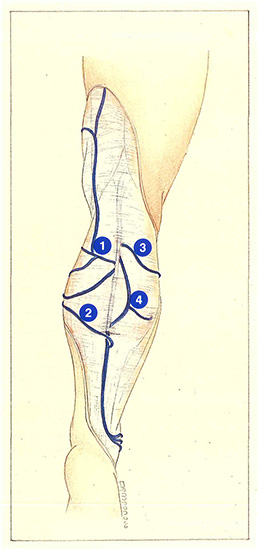Collateral branches
The short saphenous vein can receive veins derived from the long saphenous vein. These intersaphenous communications are ensured by a Giacomini vein or by the reticular venous plexus of the medial surface of the calf (Figure 88-1).These may sometimes correspond to direct communicating veins, which form a real intersaphenous plexus (Figure 88-2).
The saphenopopliteal junction can therefore be competent, while the underlying trunk presents signs of reflux derived from the long saphenous territory.
Other collaterals of the short saphenous vein drain territories of the posterolateral aspect of the calf (Figure 88-3) or thigh, which explains why varicosities on the lateral surface of the thigh can he related to a drainage abnormality of the short saphenous territory.
Finally, some collaterals create a localized shunt of the short saphenous vein (Figure 88-4), forming a superficial venovenous shunt. Detection of reflux on the shunting branch does not therefore necessarily correspond to incompetence of a perforating vein or the saphenopopliteal junction.

Further reading
Griton Ph. Territoires et vols de territoires.
Quinzaine de perfectionnement en pratique phlébologique. Interligne, Paris, 1989.
